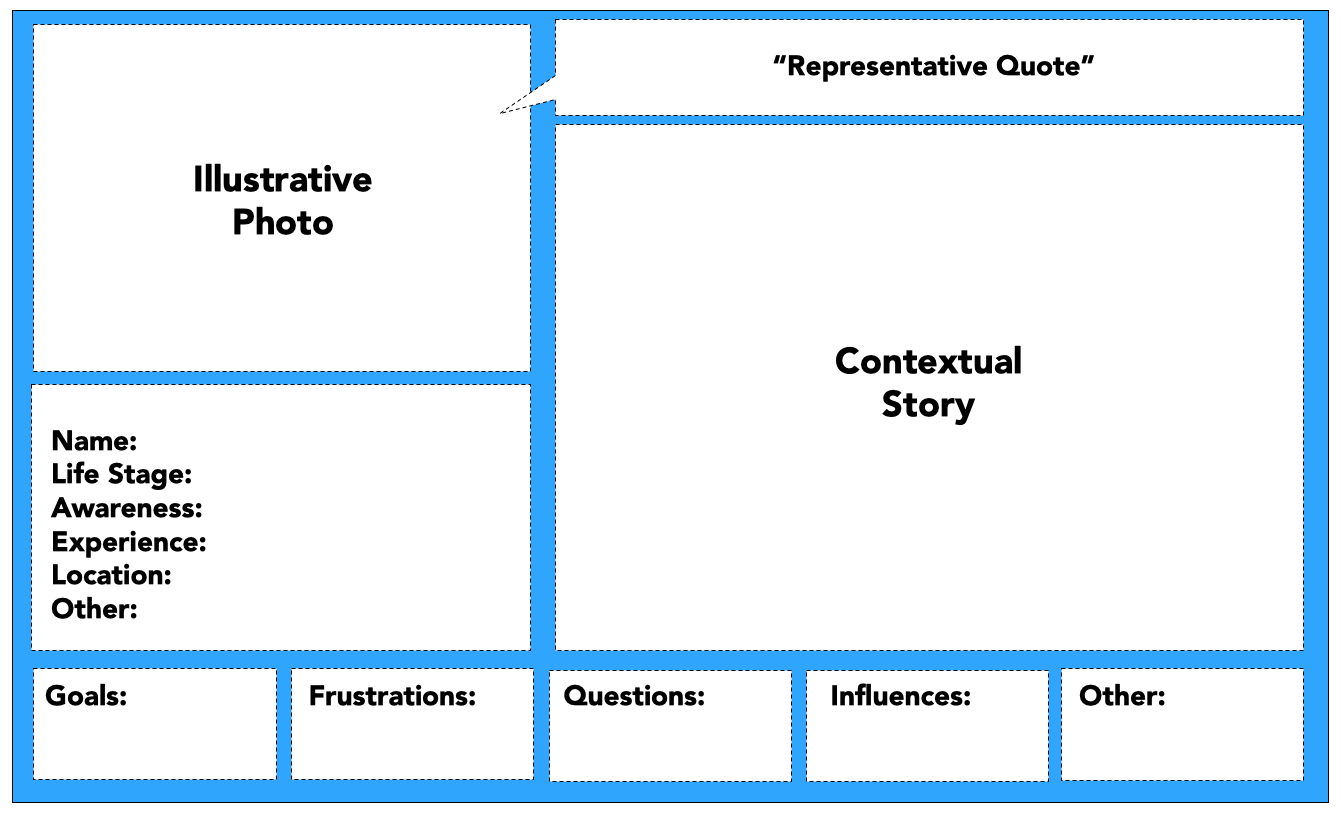Description
The purpose of an Audience Persona is to communicate details about a specific segment of your target audience that are useful when designing a solution for them. An Audience Persona is a fictional representation of a segment that has similar needs, behaviours, and goals in relation to your offering. Personas should be created based on how they will be used, and only include details that are relevant to this scope. Personas differ from customer segments used in marketing departments in that they focus on common needs rather than common demographic traits. Marketers should use audience research to inform personas to avoid bias, and develop personas as a group to gain alignment.
Questions
The Audience Persona helps to answer marketing questions like:
Who are we designing our product or service for?
What qualities of our offering are most important to our target audience?
How does our offering fit in the life of our target audience?
Steps
Determine the scope of your focus. This may be the business line, marketing program, product, or service that you are designing. Consider how broad or narrow your personas need to be in order to help.
Conduct audience research, focusing on those attributes and questions that are most critical to your scope and where relevant findings are not available. Persona accuracy increases with research depth.
Create audience segments based on your research. Review and organize all of your findings. Look for similarities and patterns across your data, and create audience segments based on meaningful attributes.
Document details for each audience persona. These details need to define each group and be helpful for the teams using the persona. Avoid extraneous details that are not relevant, and may distract focus.
Humanize your audience persona. Create a document for each persona that includes the salient details, along with a realistic personal description and a narrative that makes the persona relatable and unique.
Considerations
Creating too many personas will distract your focus. Use a maximum of 7.
Avoid creating personas based on assumptions. Find ways to research even when resource-constrained.
Ensure you update personas over time as your offering changes and new data is available.

